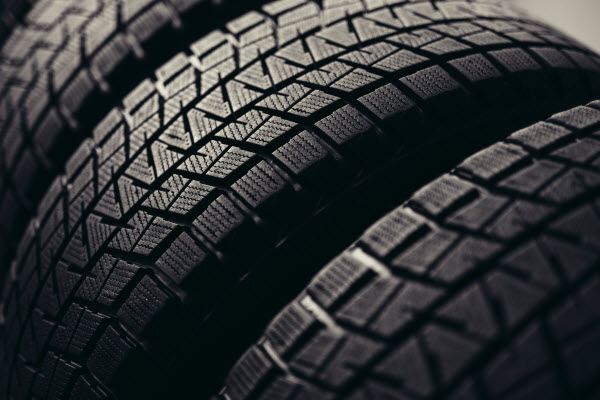Do you really need snow tires?

There’s a chill in the air as we await the arrival of winter. You may have to scrape the frost from your windows and let your car warm up before driving. You may feel like you have less control on the road. Perhaps you find yourself driving a little more cautiously.
It’s about this time when drivers start thinking about snow tires. Do you really need them? When is the right time to put them on?
Experts recommend that as soon as the temperature dips below +7°C you should switch to snow tires. Others say that if you can see your breath, it’s already time to have them on your vehicle.
Consider this. When the thermometer sinks to 0°C, road conditions get worse. Did you know that at 0°C, snow and ice become slippery? Between +4°C to -4°C, black ice forms. And at -7°C, your all-season tires lose their grip on icy roads. In other words, it doesn’t need to get very cold before your vehicle needs snow tires.
Aren’t my all-season tires good in all four seasons?
You would think that “all-season” or “all-weather” tires should be suitable for all seasons and all weather conditions. However in Canada, despite their name, all-season tires are good for only three seasons: spring, summer and fall. They are not designed to handle the severe winter conditions that strike many areas of Canada.
Let’s compare the two. All-season tires are made of a hard rubber compound to promote long tread life. When outside temperatures drop, all-season tires can harden and start to lose their grip. This reduction in traction increases the chance of your car going into a spin or making you lose control of your vehicle.
On the other hand, winter tires are designed to perform in very cold temperatures. They are made of a softer rubber compound that remains flexible in the cold. This allows them to maintain a good grip on icy and snowy roads, making it much safer for you to drive.
All-season tires have a closed tread pattern that helps the tires push away water and enables them to grip the road in spring, summer and fall. However, in winter conditions, closed tread patterns will clump up with ice and snow keeping the tire from properly gripping the road.
In contrast, winter tires have open tread patterns that push away ice and snow. The treads on winter tires also contain sipes, which are grooves cut into the tread to create hundreds of small biting edges. These edges grip the road and help push away slush and snow. The treads and sipes on winter tires increase your vehicle’s traction by up to 50 percent so you have control over steering and can stop faster on ice, slush and snow.
For the best traction and control in Canadian winters, snow tires are a must.
Do I need to buy and install all four snow tires at once?
Yes. When equipping your vehicle with winter tires, it is important that they are installed in sets of four to help maintain control and stability of your vehicle in icy conditions.
Installing just two winter tires to save money compromises your vehicle’s safety and the overall effectiveness of winter tires.
Is it a law to have snow tires on my car?
With the exception of Quebec, and some parts of British Columbia, snow tires are not legally required.
In B.C., snow tires are required by law from October 1 to March 31 on many rural highways and high mountain passes in the interior, North and Vancouver Island. There are signs posted on these highways throughout the province defining which type of snow tires are acceptable for cars and light trucks. Large trucks must carry chains. Drivers who are not compliant may be turned away, and be subject to a fine.
In Quebec, drivers are legally required to have snow tires on their vehicles from December 15 to March 15.
Which snow tires do I need?
Studded. Non-Studded. Directional, symmetrical and asymmetrical treads. Which ones are right for you?
Your tire store consultant will assist you in choosing the right tires for the amount of winter driving you do, where you drive, local driving conditions, and the level of safety and performance you expect from your vehicle and its tires.
Be sure your tires are marked with the symbol of a snowflake and mountain on the sidewall. This guarantees that they have been tested and certified to meet winter performance requirements.
Will driving without snow tires void my insurance or affect my claim if I’m in an accident?
Driving without snow tires will not void your insurance if you have to make a claim. It doesn’t mean you're automatically considered to be at-fault either. However, if you get in a crash where winter tires could have helped, not having them may affect whether—or how much—you are at fault.
Don't wait until you hit that first patch of black ice to install snow tires. Even if it feels too early, it probably isn’t. Canadian roads can be very unpredictable in the winter. Be safe and sure when you head out.



.jpg?300x300)